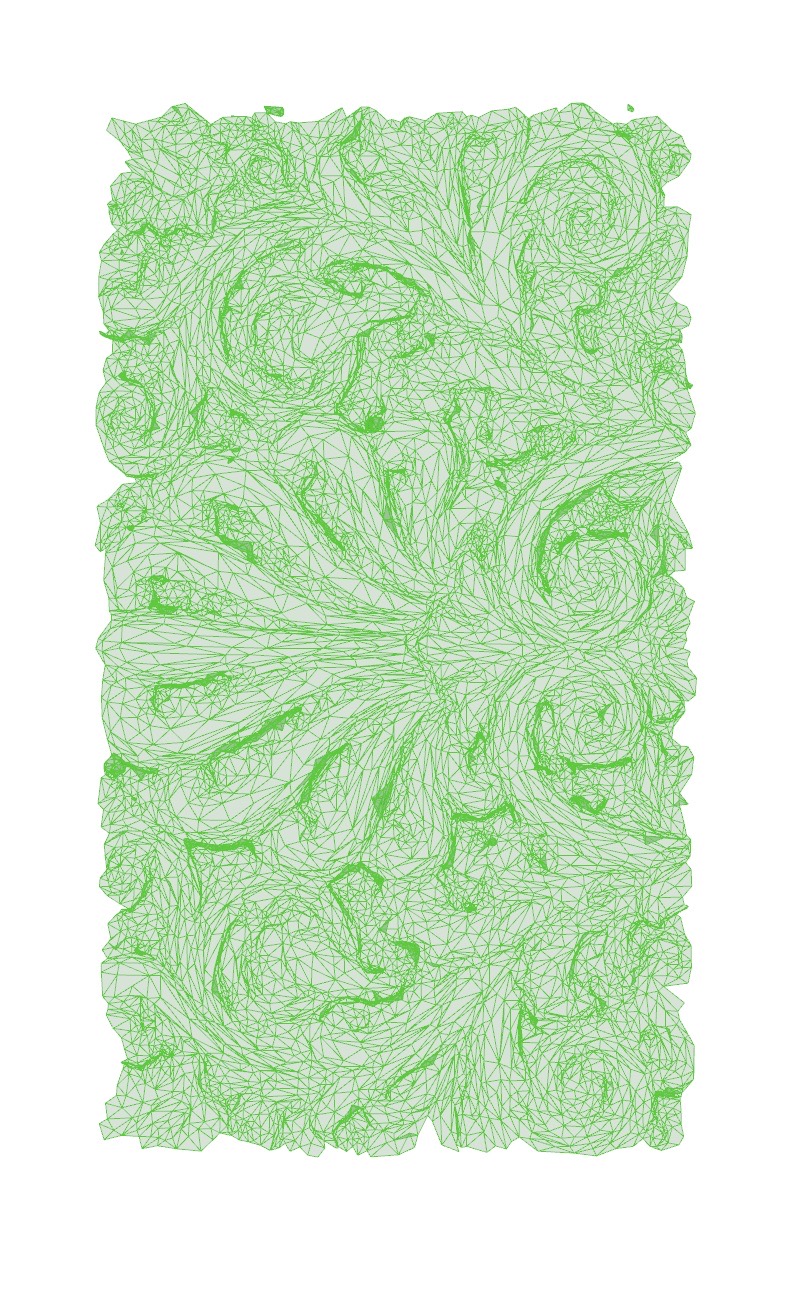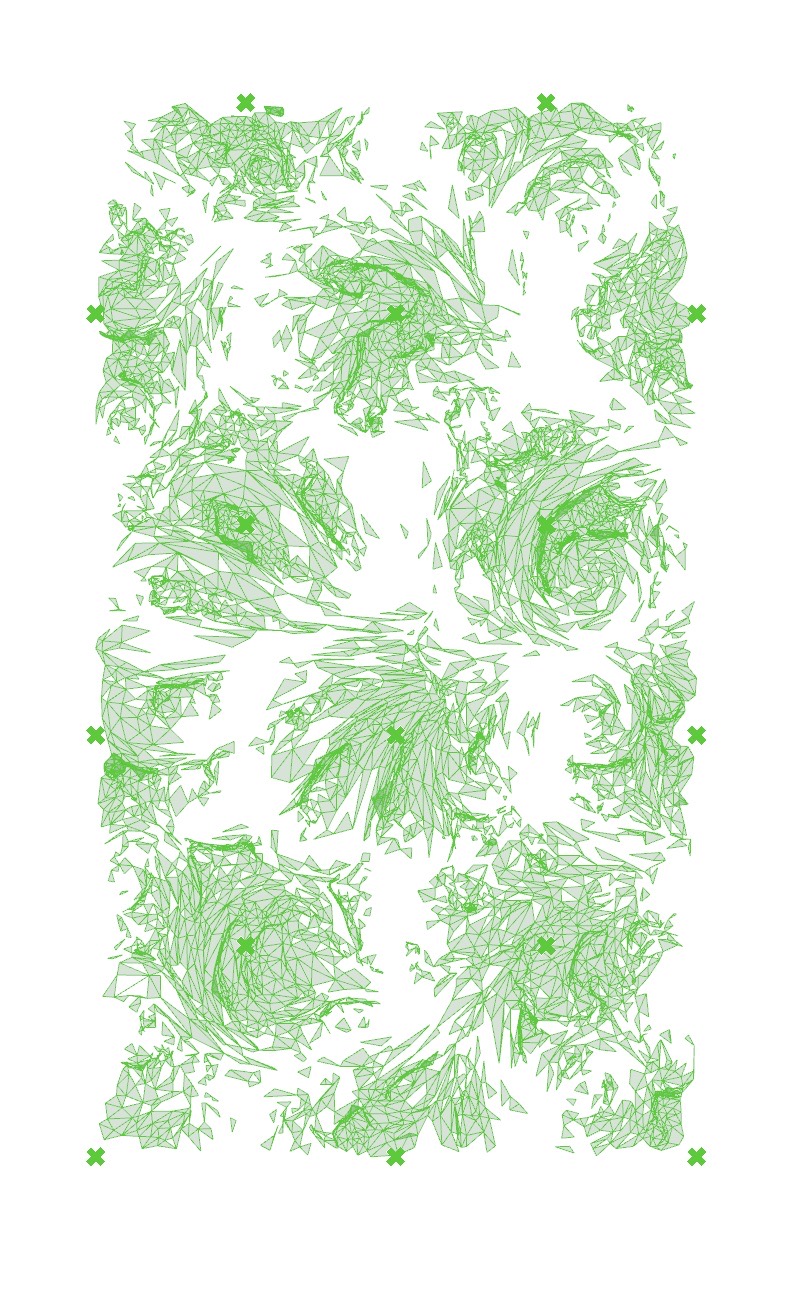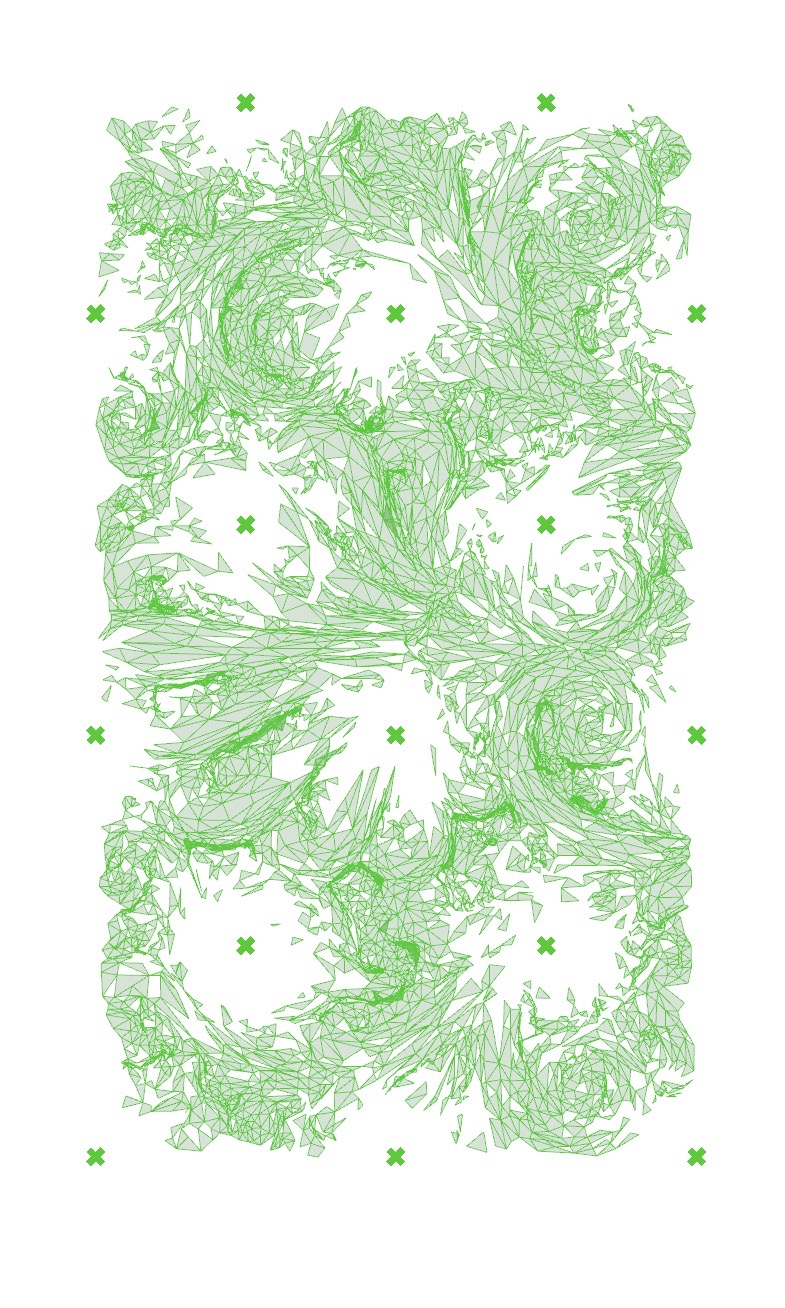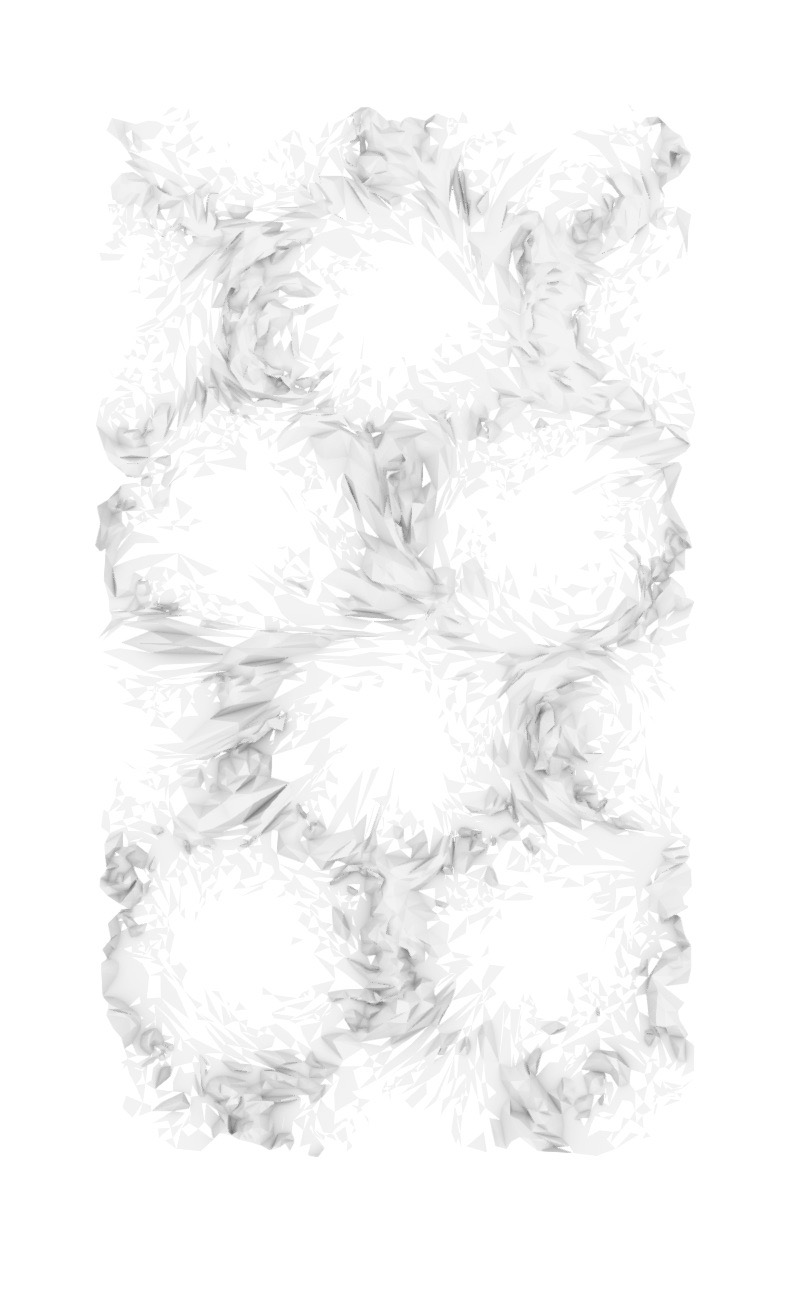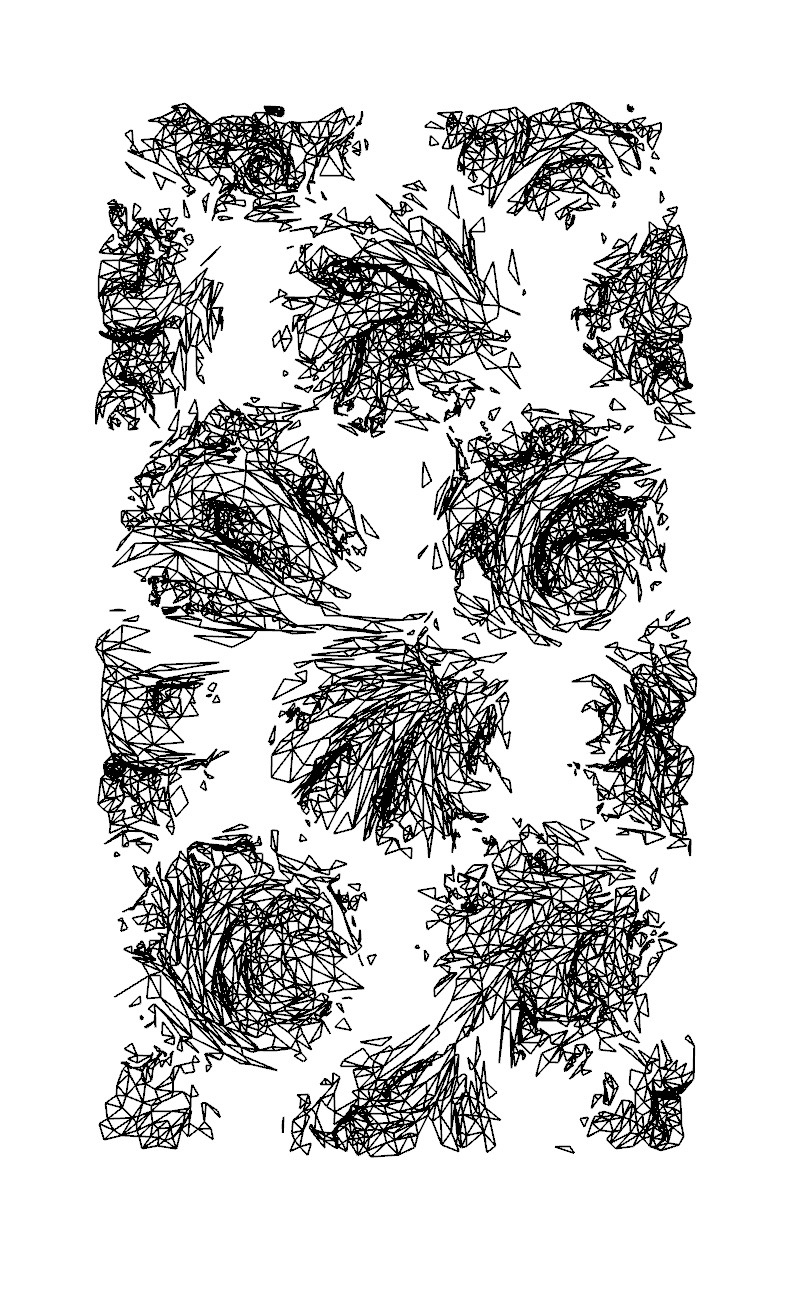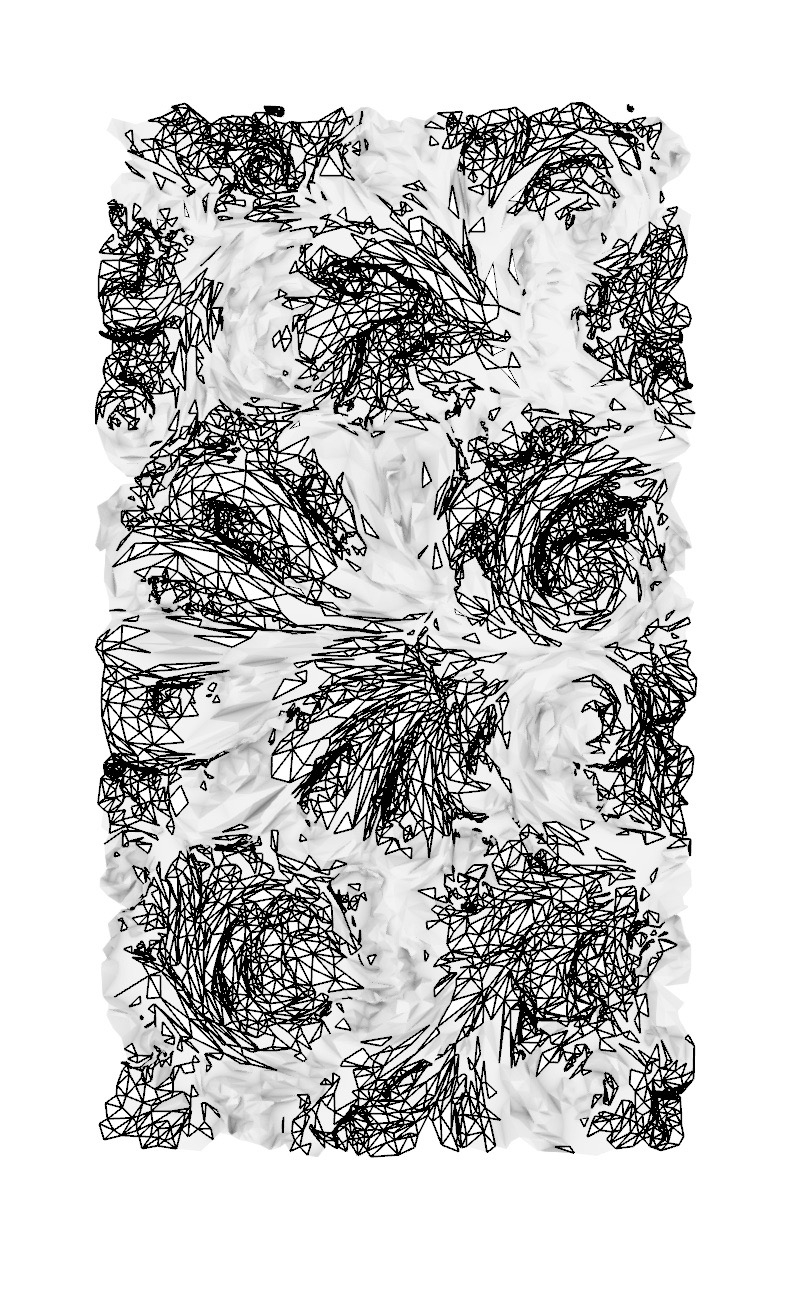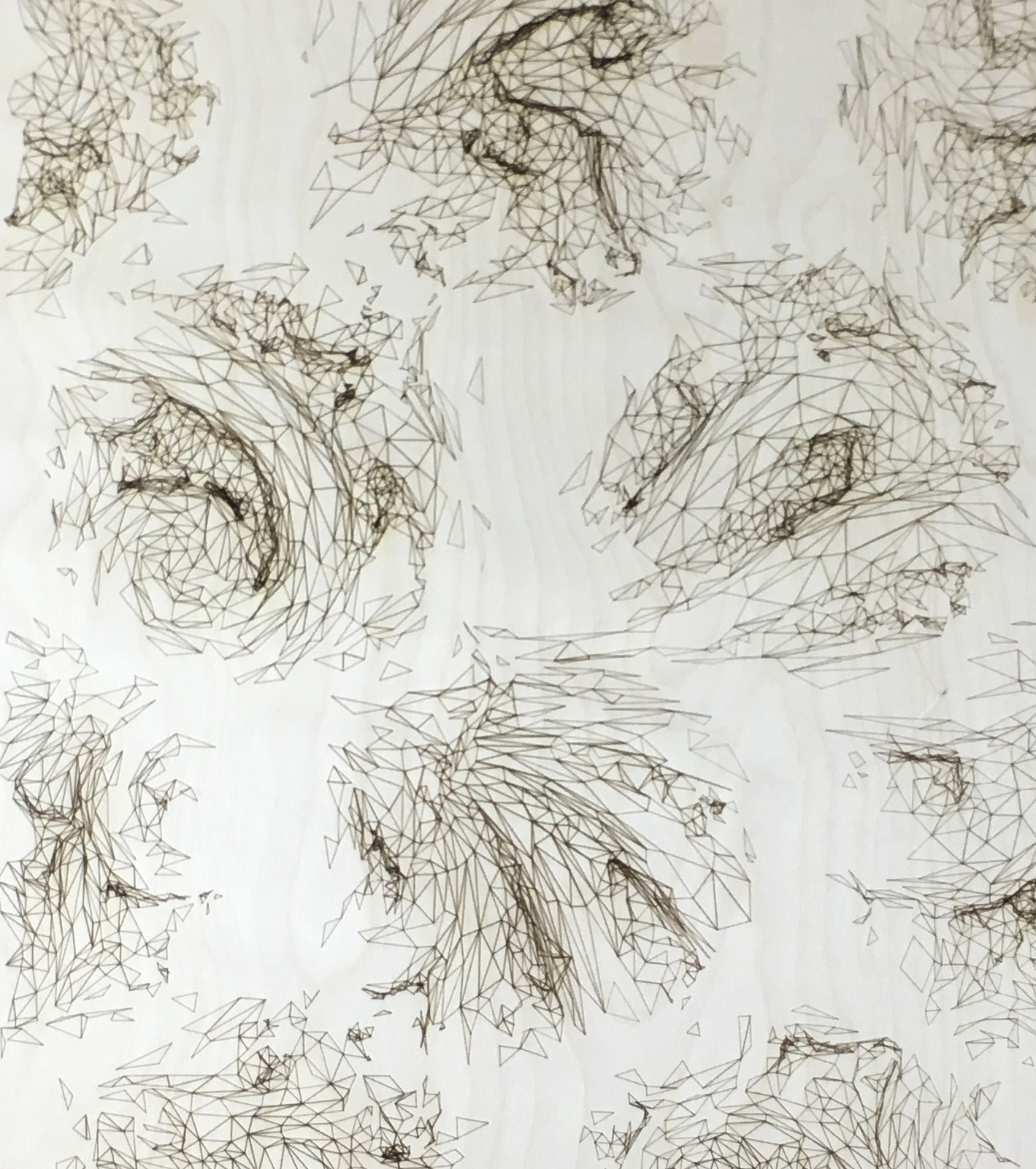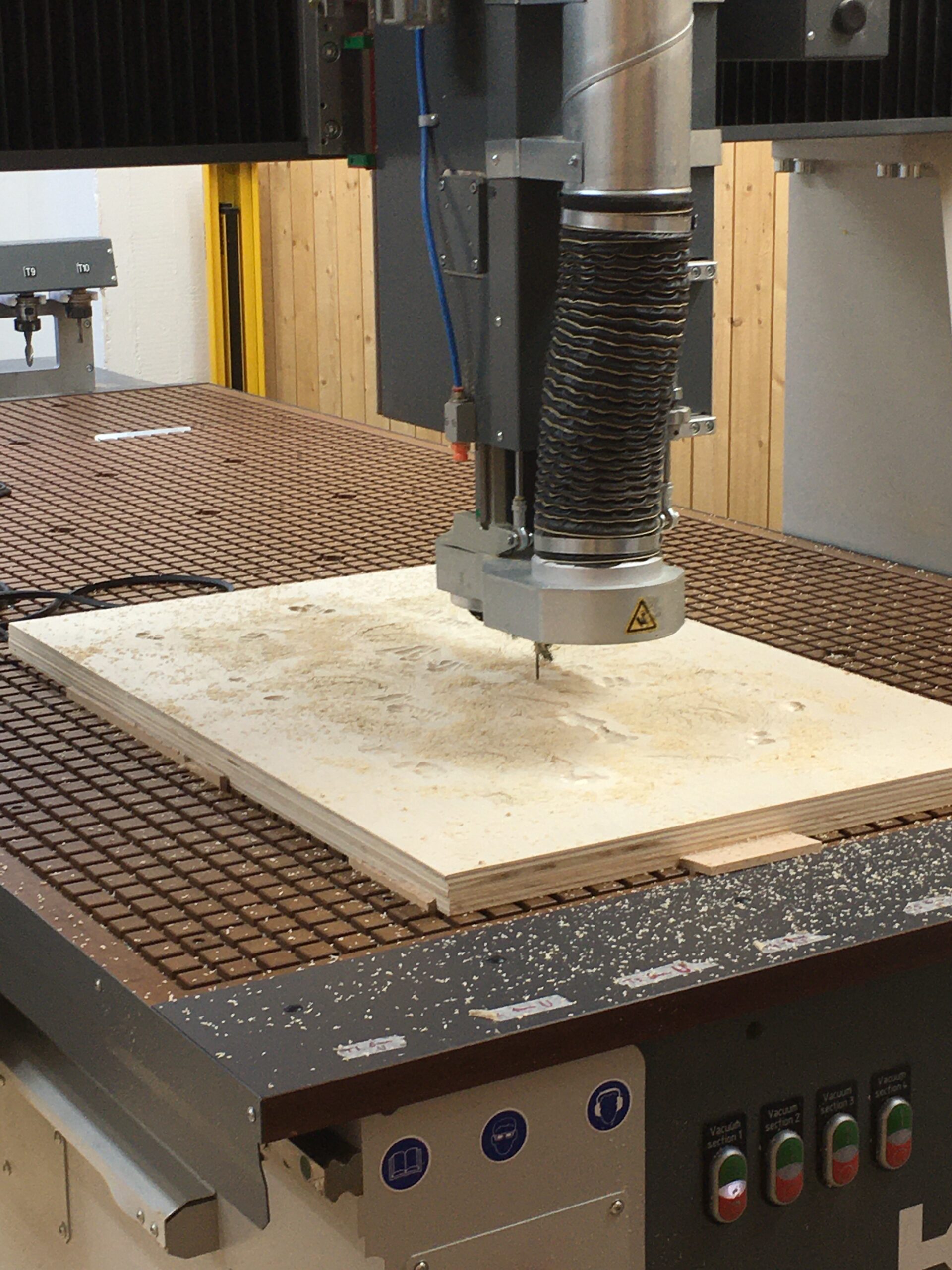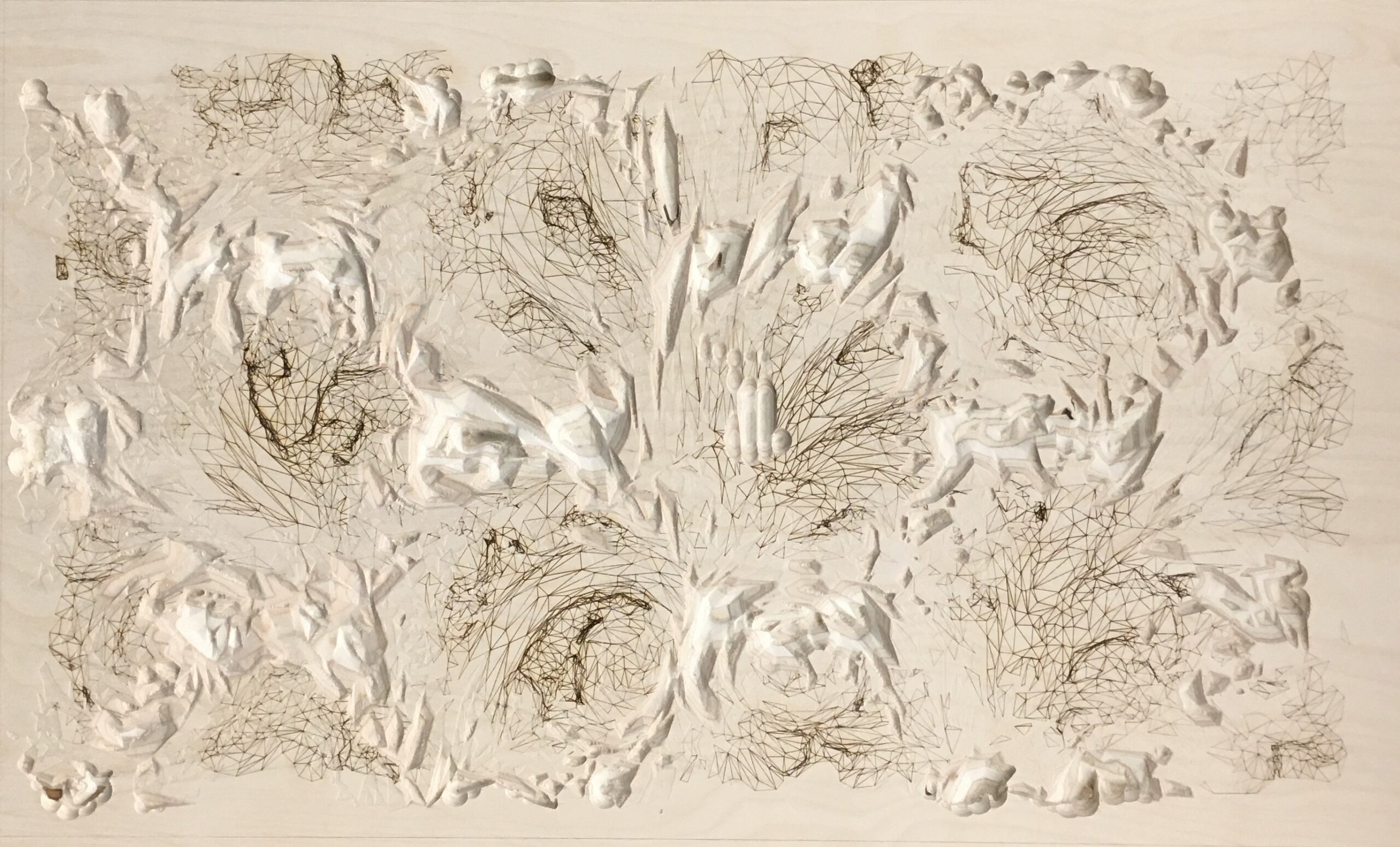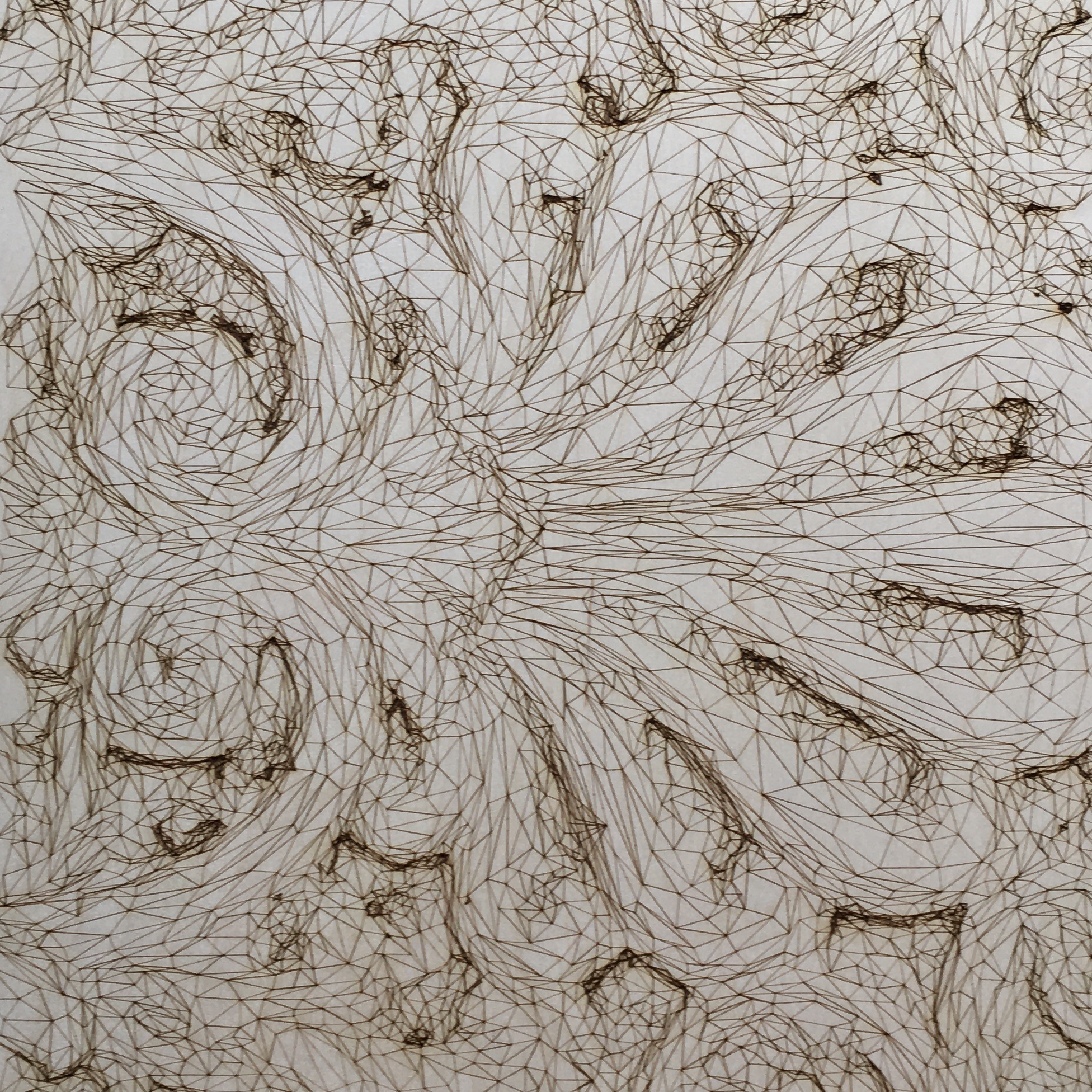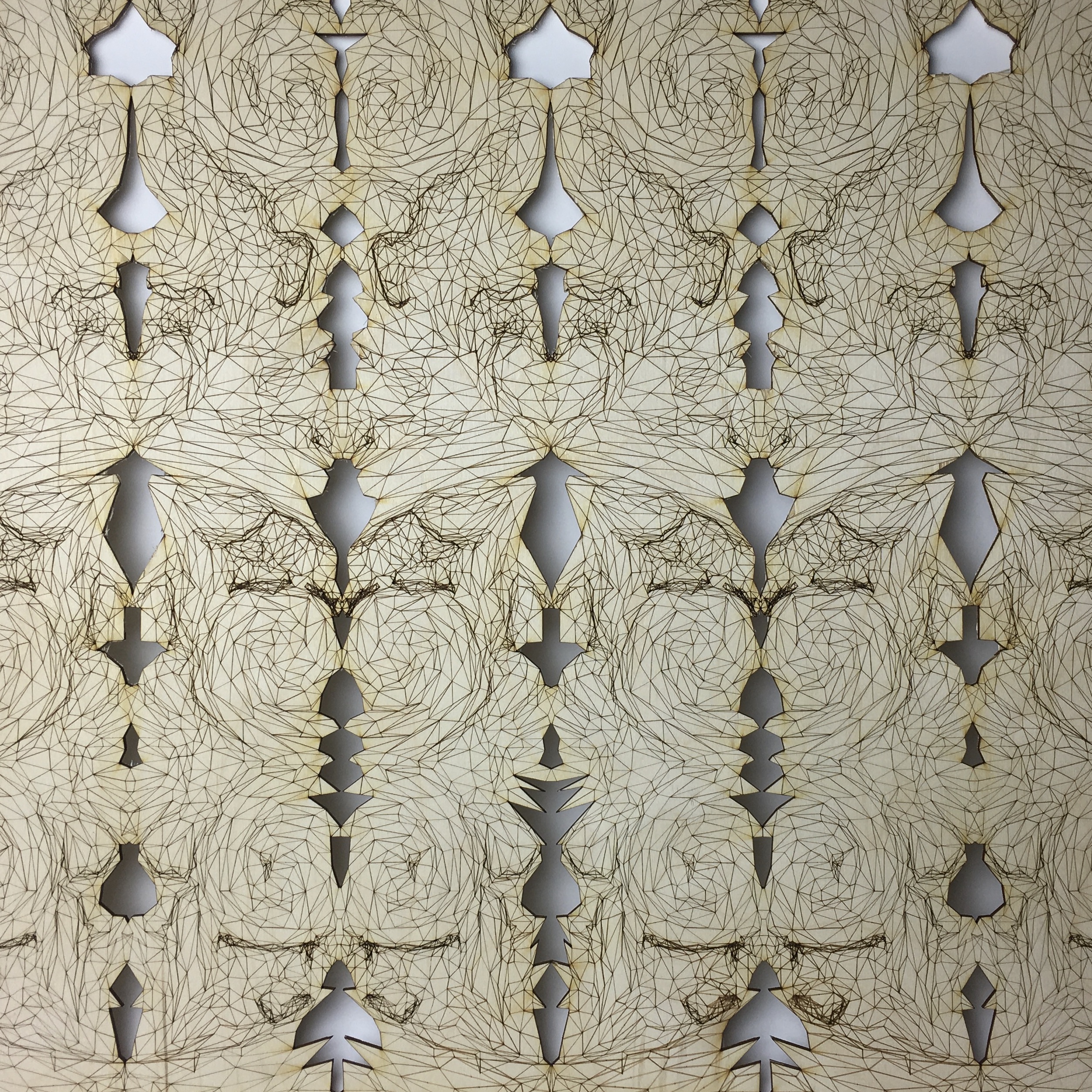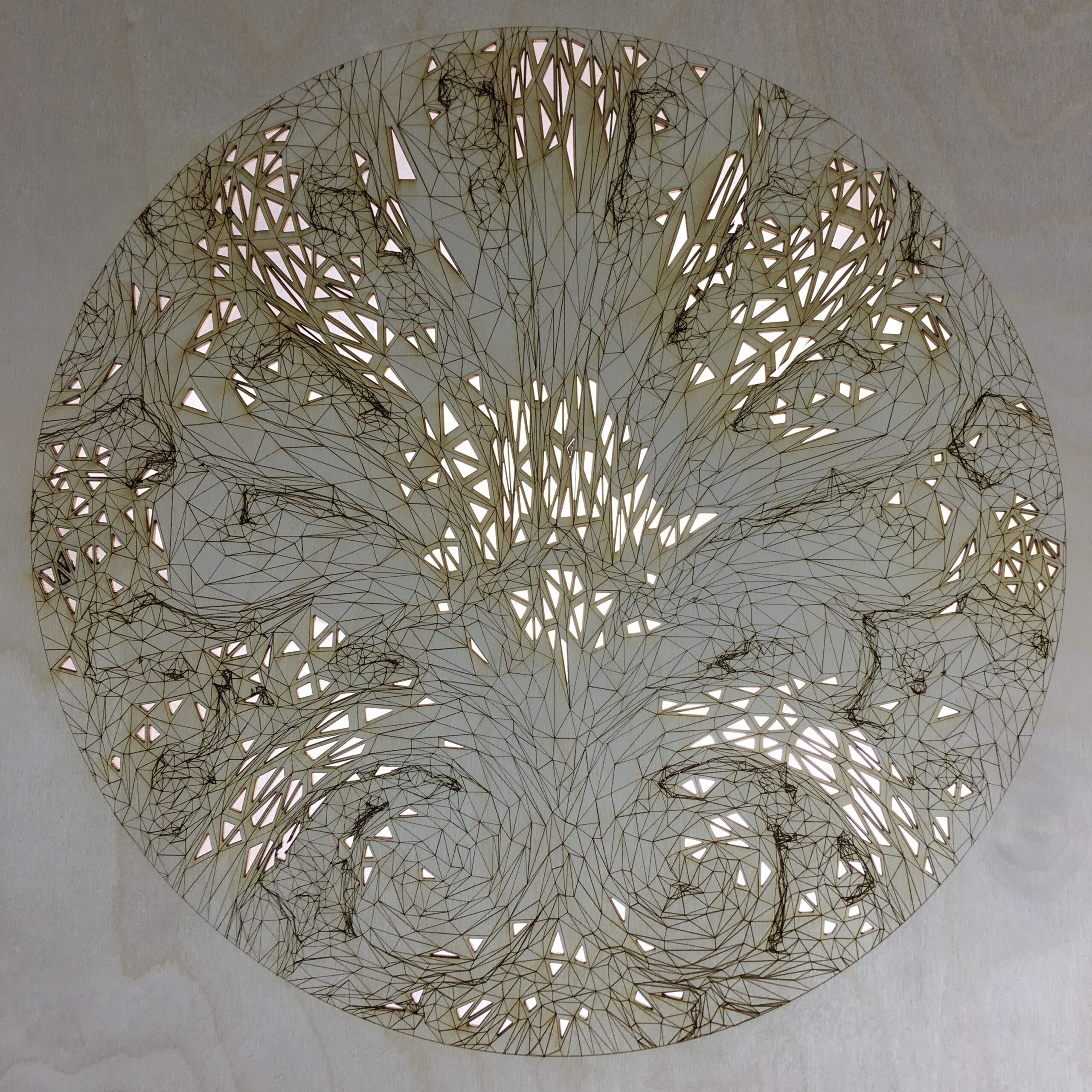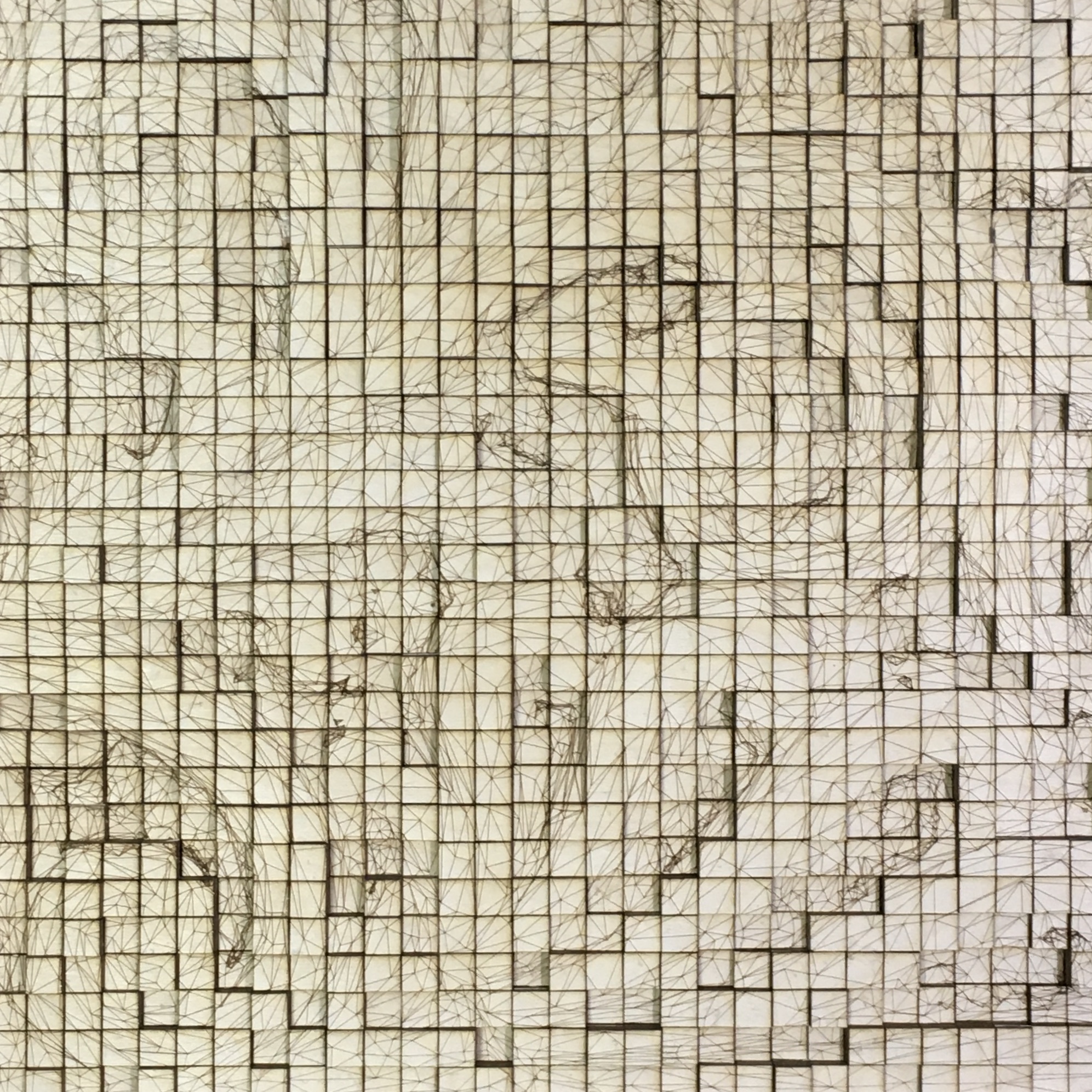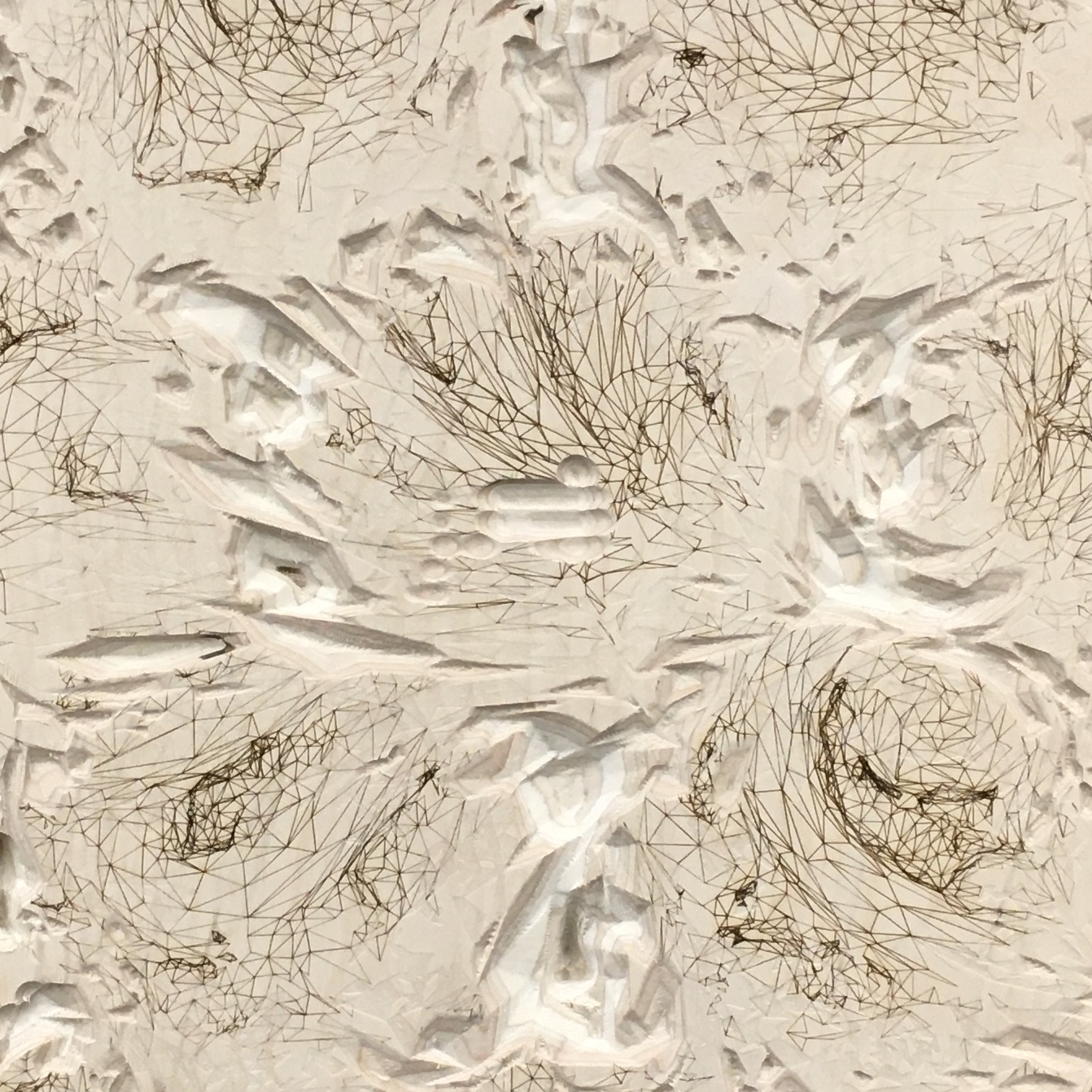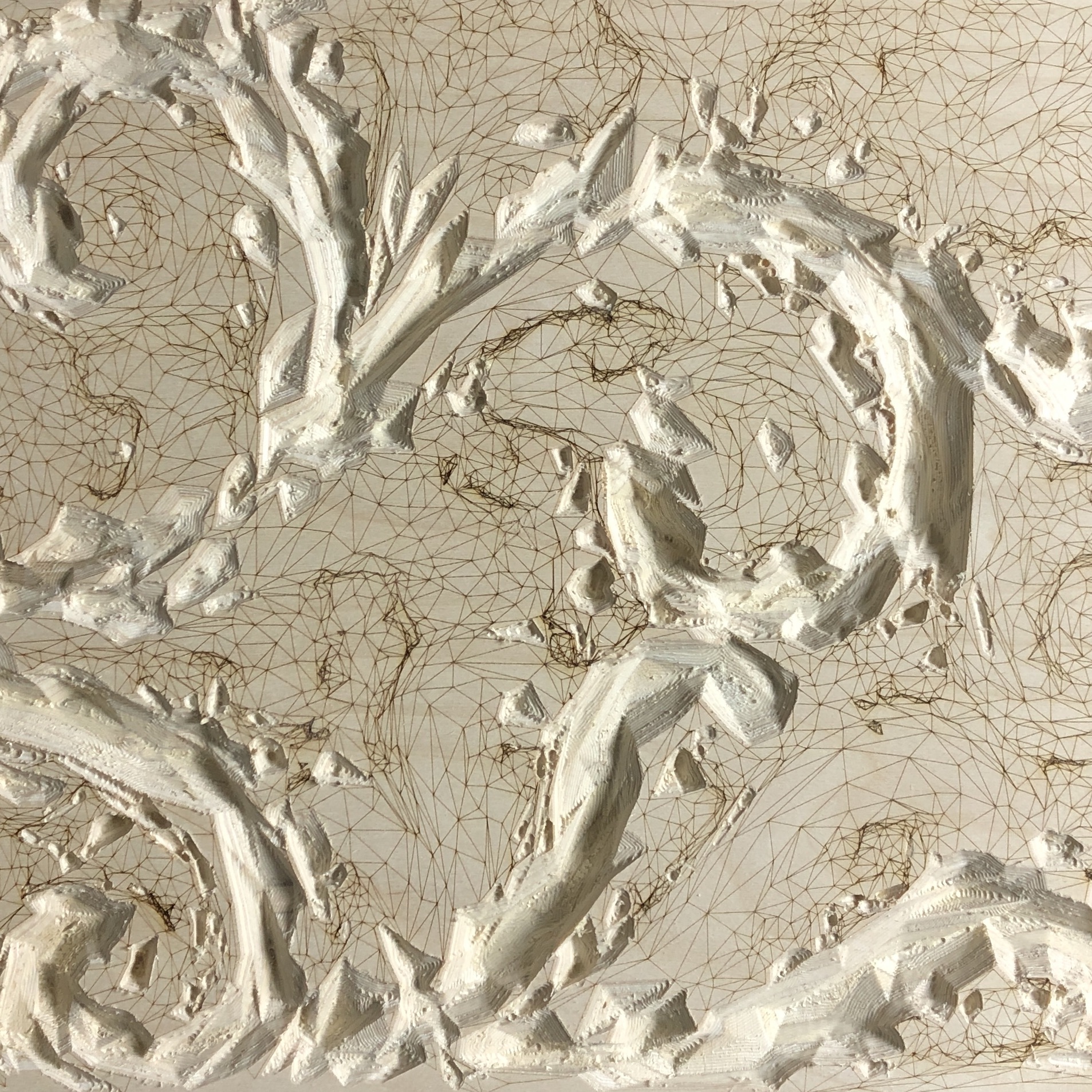5A. 2D/3D Projection
What happens if one combines not only different modeling techniques, but also different fabrication tools using different file-formats? The original mesh can be represented physically as part 2D and part 3D. To test this, the laser cutter (reading DWG-files) and the CNC-mill (reading STL-files) is combined.
Method
The logic of using proximity to points to separate different parts of the mesh is used in this iteration as well. However, here it is applied to the original 3-dimensional mesh. The mesh is divided into two groups, one to be engraved, and one to be milled. To get a seamless transition between the two expressions, all of the geometry that is to be engraved is projected onto the XY-plane and all of the geometry that is to be milled is modified so that its boundary is lying in the XY-plane as well. The script is set up so that the Z-value of each control point in the milled parts is proportionate to its distance from the closest lying engraved line.

Workflow for splitting the geometry into two sets – one for milling and one for engraving 
Workflow for projecting the vertices of engraving-set to the XY-plane and adjusting the original mesh accordingly. 
Rerunning the split using the adjusted mesh as input. Outputs are now ready for fabrication.
Result and discussion
The physical model shows how the two fabrication methods can be combined to create contrast and depth both through the 2-dimensional projection and through the 3-dimensional milling. When producing the physical model however, a few mistakes were made in the milling process leading to incorrect alignment of the engraved parts and the milled parts. The effect is therefore perhaps not as convincing as it could have been should this manual mistake have not been made. Another physical model will therefore be made to test this workflow a second time. I think the effect is powerful in that the milled part entail, in my opinion, a far more organic expression than the lines. The milling mimics to depth of the original ornament while the engraved lines acts more as a guide to show how the original geometry was organized. Also, in splitting the mesh into these distinct sets, there is an artistic opportunity to put a new layer of information on top of the original. This could be explored in a lot of ways and perhaps fuel a discussion on what is allowed and what is not allowed to change and distort when using historical references.
